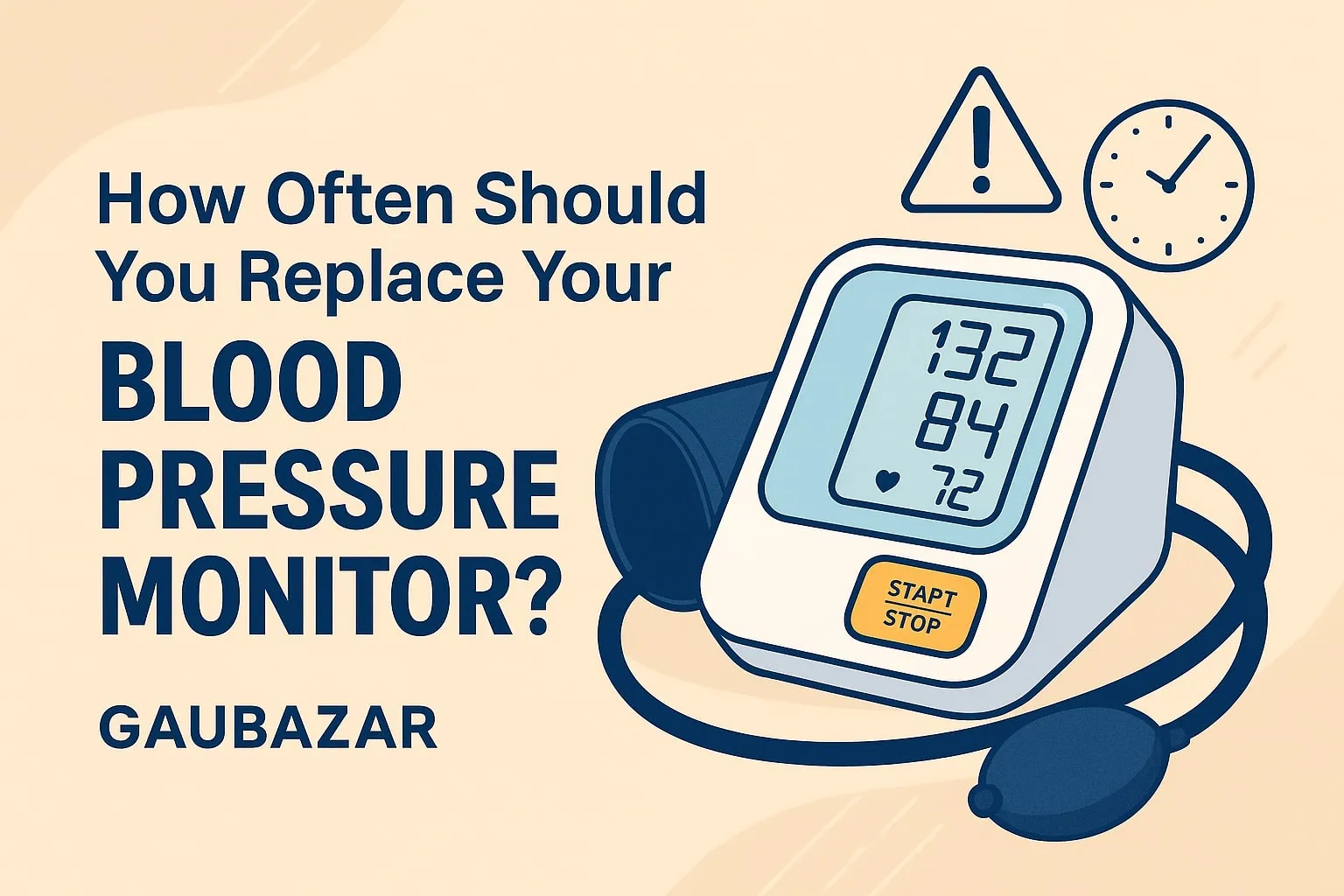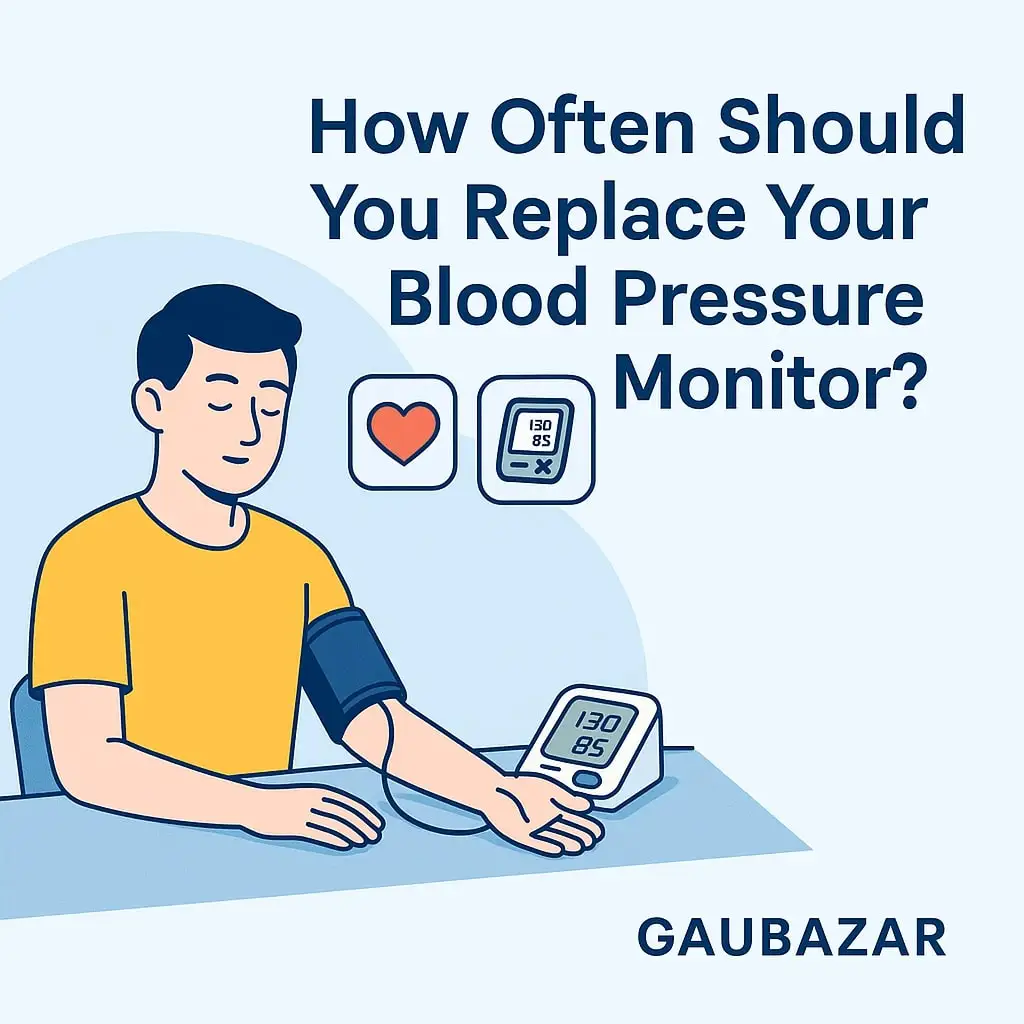
A blood pressure monitor is one of the most useful tools you can keep at home—especially if you’re managing hypertension, heart conditions, or simply want to stay informed about your health. Like any device used regularly, it won’t remain accurate forever. Over time, parts wear down, readings drift, and the monitor may no longer reflect your true blood pressure.
Knowing when to replace it can help you make better decisions about your health and avoid relying on inaccurate numbers.

How Long Does a Blood Pressure Monitor Typically Last?
Most home blood pressure monitors stay accurate for about 2 to 5 years.
The actual lifespan depends on:
- How often you use it
- The quality of the device
- How well the cuff is maintained
- Where and how it’s stored
- Battery care
If you measure your blood pressure daily, the device undergoes more wear, and accuracy checks become more important. On the other hand, occasional users may find their device lasts longer—but still needs monitoring over time.
Why Accuracy Changes Over Time
Even the best blood pressure monitor can lose accuracy. This happens because:
- Pressure sensors age slowly and respond less precisely.
- Cuffs soften, stretch, leak, or lose grip, affecting inflation.
- Internal pumps weaken, causing slow or uneven inflation.
- Electronics drift out of calibration, even if the device still works.
- Heat, humidity, falls, or rough handling affect internal components.
None of these issues mean the device is “broken”—but they can mean it’s no longer trustworthy.
Key Signs It May Be Time to Replace Your Monitor
1. Your readings are suddenly inconsistent
If numbers jump unusually high or low within minutes without any change in your posture or stress level, the device may be losing accuracy.
2. You see frequent error messages
Repeated errors—especially cuff errors or inflation errors—often indicate internal issues rather than user mistakes.
3. The cuff doesn’t behave the way it used to
If it leaks air, inflates unevenly, or no longer secures tightly on your arm, it may affect accuracy. Sometimes replacing the cuff alone helps, but not always.
4. The inflation feels slower or weaker
A healthy pump inflates smoothly. If inflation takes noticeably longer or stops abruptly, the internal motor could be wearing down.
5. Batteries drain faster than before
Older circuitry consumes more power. If you find yourself replacing batteries frequently, it could be a sign the monitor is aging.
6. Your monitor is more than five years old
Even if it appears to work fine, older devices often fall out of calibration. Technology also improves quickly, and newer monitors offer better accuracy and comfort.
When Replacing Only the Cuff Makes Sense
A damaged or worn cuff doesn’t always mean the entire monitor is bad. You can replace just the cuff if:
- The monitor still gives stable readings
- Only the strap, tube, or bladder is damaged
- The device is relatively new
But if the device itself is older or showing multiple issues, replacing the entire monitor is usually the safest choice.
Why Upgrading to a New Monitor Can Be Worth It
Newer blood pressure monitors often provide:
- Improved accuracy
- Softer, more comfortable cuffs
- Faster inflation and deflation
- Detection of irregular heartbeats
- Memory tracking for multiple readings
- Optional smartphone connectivity
These features can make daily monitoring easier and more reliable, especially if you track your numbers over time. Check Latest BP Machine in Nepal

How to Make Your Monitor Last Longer
Even though a monitor will eventually need replacing, good care can extend its lifespan:
- Keep it in a cool, dry place
- Wrap the cuff neatly after each use
- Avoid dropping or shaking the device
- Replace batteries before they corrode
- Clean the cuff regularly
- Use the correct cuff size for your arm
Simple habits like these help slow down wear and maintain accuracy.
Final Thoughts
A blood pressure monitor plays a meaningful role in your day-to-day health decisions, so it’s important to know when it’s time for a replacement. If you notice inconsistent readings, frequent errors, cuff issues, slow inflation, rapid battery drain, or your device is simply getting old, consider upgrading. A reliable, accurate monitor gives you peace of mind—and clearer insight into your health.
